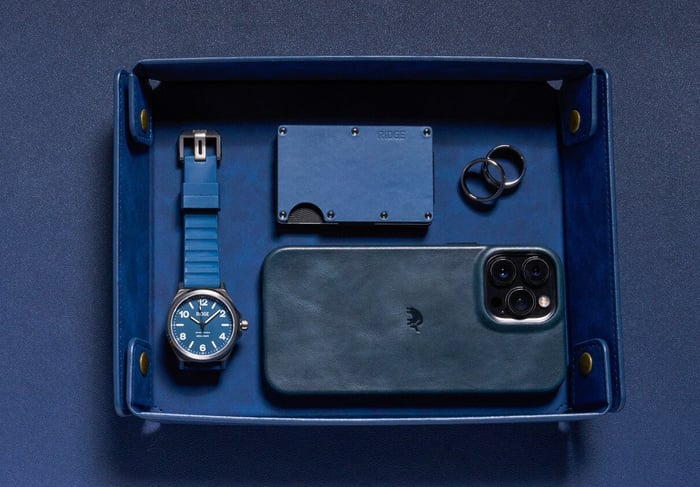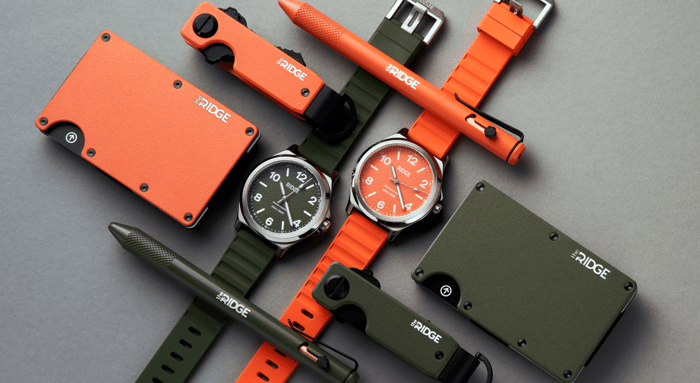A digital wallet is an application that allows you to store your debit and credit card information. By doing so, you can make contactless payments, which have been gaining much traction over the past few years.
The COVID-19 pandemic further increased the popularity of digital wallets. Mobile transactions became a preferred payment method for customers and sellers alike. Minimizing the exchange of cash was a major preventative measure.
Credit and debit cards aren’t the only things you can store in a digital wallet. You can also digitalize coupons, gift cards, and even boarding passes. Some wallets also allow you to store documents like your ID or passport. With this in mind, some options can almost completely remove the need for a physical wallet.
Digital wallets make it super easy to instantly transfer money to people and companies. But exactly what is a digital wallet, and how does it work? Keep reading to find out.
How Do Digital Wallets Work?
Digital wallets rely on several technologies to provide contactless payments and long-distance transfers. Let’s explain how they work.
Near Field Communication, or NFC
NFC technology allows devices to wirelessly transfer information when placed close to one another. NFC uses radio waves of specific frequencies to execute a digital payment between, say, your phone and a payment terminal. Wallets like Apple Pay, Android Pay, and Samsung Pay rely on this technology.
Of course, to make this happen, retailers need an NFC-enabled card reader, and your mobile device needs to support NFC. Most devices released in the last few years have NFC support, but it’s worth checking if yours is among them.
Magnetic Secure Transmission, or MST
When you swipe a physical credit or debit card, it generates a magnetic signal and sends it to the card reader. MST works in a similar way, mimicking this sort of magnetic connection to process a payment.
MST works on just about all card readers that don’t require you to insert a card into them, so most modern POS (point-of-sale) terminals should support it. It’s a convenient option for in-store payments, and is supported by Apple and many Android mobile wallets.
QR Codes
There’s a high chance you’ve encountered a QR code at some point. They work the same way for payments as other purposes. You scan the code, and it takes you to the payment form. You can process a payment virtually anywhere, no matter how far from the merchant you are.
A big advantage of QR code payments is that they often don’t require any specific apps. Many phone camera apps can read a QR code by default. If that’s not the case with yours, you can find a QR code reader on the AppStore or PlayStore.
The History of Digital Wallets
Contactless payments date back to 1997 when Coca-Cola set up vending machines that accepted text message payments. Two years later, PayPal rolled out its electronic transfer service, which is now among the most widely used in the world.
In 2011, Google pioneered digital wallets in the form we have today. It allowed users to process online payments, redeem coupons, and collect loyalty points.
Mobile payments started taking over in 2014 when Apple launched ApplePay. Android and Samsung followed suit and created their own wallets a year later. Since then, digital wallets have gained in popularity and are on their way to becoming the primary payment method.
Today, we’re witnessing a new era in the evolution of digital wallets – crypto wallets. Bitcoin introduced decentralized, untraceable payments back in 2009. The cryptocurrency’s explosion in 2011 kicked off the rise of various coins and tokens, for which we have specialized digital wallets like MetaMask, Exodus, and Coinbase Wallet.
E-wallets are becoming more capable practically by the day. We’re seeing new payment apps surface, and the features of the existing apps are constantly evolving.
There’s no doubt that the future of payments is digital. So if you still haven’t started using an e-wallet, let’s look at how to choose the right one.
What Makes a Good Digital Wallet?
While there are many digital wallets out there, not all of them might be at your disposal. Some wallets are tied to specific brands or mobile device manufacturers.
Take Samsung Pay as an example. As the name implies, it’s specific to Samsung’s devices, so you can’t use it with an iPhone. So sticking to a specific brand makes the search easier because it narrows it down to device-specific wallets.
Of course, there’s a plethora of third-party options to choose from. For instance, you can download Venmo or PayPal from both the AppStore and PlayStore, so you’re not necessarily limited to Samsung/Google Pay or Apple Pay.
Finally, remember that not all merchants accept all wallets and payment methods. This is often due to geographic restrictions. For example, while PayPal is available in over 200 countries and territories, you can use Apple Pay in only 74.
What makes for a good digital wallet depends on the reason you need it. Will you only make contactless payments in brick-and-mortar shops in your area? If so, wallets native to your mobile device should suffice.
But if you’d like to send money across the globe and shop online, you’ll want to choose a wallet supported by as many merchants as possible. Similarly, if you want extra features like the ability to store your event tickets or loyalty cards in the wallet, you’ll need to choose the right app and make sure your area supports such features.
Keep in mind that you don’t have to limit yourself to one wallet. Depending on your location and device, you can have several digital wallets that will fulfill a variety of purposes. As long as your card issuer supports the wallet, you can enjoy all the benefits.
Why the World Might Be Transitioning to Digital Wallets
With the advancement of technology, our world is getting more interconnected. Instead of having to send money to someone in another country by mail and wait days or weeks for it to arrive, you can do it in less than a minute and a few clicks.
We’re getting used to this level of convenience, and there’s no going back. Digital wallets let people buy things from the other side of the world, and allow sellers to reach a global customer base.
With all of the above in mind, it’s safe to say that cash is slowly but surely becoming outdated. It’s only a matter of time before digital payment options become the new norm.
Digital Wallet: Safety
We’ve answered the main questions you had – ‘What is digital wallet and how does it work?’ Now let’s discuss something you’re surely wondering – are digital wallets safe?
If you haven’t used digital wallets before, it’s normal to have concerns about the safety of your banking information. Luckily, digital wallets use multiple layers of security to ensure safe transactions.
When you make a transaction through a digital wallet, it generates a single-use token for identification purposes. The recipient will only see the token’s random number, not your personal information.
In addition, completing a transaction involves some sort of authentication, either biometric or through a PIN/passcode. This minimizes the chance of someone making purchases in your name.
Some would say that digital wallets are even safer than physical cards, partially due to RFID skimming. This is a type of digital theft where someone uses an RFID reader to duplicate information from your cards or documents.
RFID blocking is a good way to prevent this, but it requires a special type of wallet. With a digital wallet, the chances of your data getting stolen are minimal without any additional equipment.
As you can imagine, physical theft of your card is much less likely if it’s uploaded to a digital wallet. A digitalized card is protected by the wallet’s PIN, as well as your phone’s PIN. Even if someone stole your phone, they’d have to go through multiple layers of security to reach your banking information.
FAQ
What is a digital wallet in simple words?
A digital wallet is a way to store banking information on your device and make contactless payments.
When you do so, your digital wallet can partially or fully replace your physical wallet, especially since some of them allow you to upload your ID and other documentation.
What is a digital wallet example?
There are many digital wallet apps out there:
-
Apple Pay – Native to iOS devices and the Apple Watch, Apple Pay allows you to store debit and credit cards, plane tickets, and even your driver’s license in some U.S. states.
-
Samsung Pay – Compatible with Samsung phones and smartwatches. Samsung Pay uses MST to process digital transactions in physical shops.
-
PayPal – Among the oldest and most widely used digital wallets, PayPal also lets you create a business account and accept payments from customers around the world.
-
Venmo – A highly popular app for sending and receiving money. It’s available in AppStore and PlayStore, but it’s only available in the U.S.
Is a debit card a digital wallet?
A debit or credit card isn’t a digital wallet. Physical cards can be used to make contactless payments, but an actual digital wallet involves an application or software.
What are the advantages of a digital wallet?
-
Contactless transactions and convenient in-app purchases
-
Multiple layers of privacy and security features
-
Ease of installation and use
-
Wide variety of options depending on your device and location

Evan Grimm, Writer
Evan Grimm is a practical writer, blogger, editor, and knowledgeable up-and-coming authority in the outdoor realm. His best-known content is published on Bowhunting.com, The Alaska Frontier, and Exodus Outdoor Gear. He and his family reside in central Alaska, where daily common sense and practicality are necessary. His commercial pilot and aircraft technician certifications make him focus on what is relevant and solidly provable. You will find him writing or proving more content. https://www.evangrimmwriter.com












































